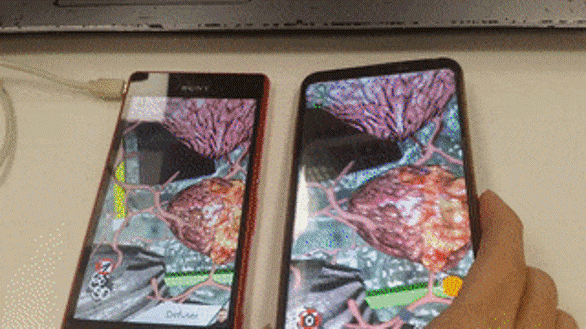Effectiveness of Serious Games in soft skills training
- Benedict Chia
- Aug 6, 2022
- 4 min read
Updated: Sep 21, 2022
In recent years, there has been more studies on the effectiveness of serious games in soft skills training. During my time in TTSH, I worked on a serious games project to improve technical and cooperative skills in minimally invasive surgeries for junior doctors. Occasionally, I would recall about it as it always brought back fond memories of working with TTSH clinicians and student interns from SP.
Yesterday, I received a message from Dr Aung Myint Oo who shared that his article “Perceived effectiveness of an innovative mobile-based serious game on the improvement of soft skills in minimally invasive surgical training” has been published in Asian J Endosc Surg. 2022;1‐9. doi:10.1111/ases.13115.
Over time, medical students’ technical skills will improve, however training up their soft skills, in particular, communication skills, was an area that our TTSH senior clinicians were concerned about. Hence, this serious game prototype and study was conceptualized to explore the perceived effectiveness of serious gaming intervention as a learning tool to improve communication, collaborative skills among the residents in surgery, house officers and junior doctors.
To give some context, back in June 2019, I collaborated with TTSH clinicians Dr Oo, Ernest and students from SP to create a multi-player cooperation game that can help simulate communication issues that happen during laparoscopic surgery (see Serious Game: Prototype 2 for details). This was the same serious game used in this study.
Interdisciplinary collaboration
As TTSH did not have in-house expertise in game design or programming, we decided to leverage on student interns from polytechnics who were skilled in game design and programming. We were fortunate to have partnered with LKC Medical School’s Medical Education Research & Scholarship Unit (Thanks Prof Nabil!) who gave the students a comfortable working space within close proximity to the principal investigator (PI), Dr Oo, as well as myself who was the co-PI. Literally, an overhead link bridge connected the LKC building to our CHI building.
I recall fondly working with the students Kian Ann, Ding Wen and Lincoln to conceptualize the game and establish deadlines and deliverables within the internship period. Dr Oo would eventually share his experience in Serious Game design and development at the CHI Innovate showcase event in Sep 2019. Similar to Dr Oo, I too enjoyed the experience immensely.
As the healthcare subject matter experts, we gave the students exposure to how junior doctors were trained using expensive equipment, located in a rather inconvenient location. Worst of all, the process simply was not engaging.
So, this misfit team of clinicians, gamers and students was assembled. Each came with their own unique skills and together we were able to create a game that indirectly simulates the handling of the laparoscopic equipment as well as the communication and collaborative skills, both of which are required by surgeons working together on a patient.
About the game
We drew inspiration from a game called “Keep Talking and Nobody explodes”. The aspect of cooperation and communication as the way to win the game was the main reason why it influenced our design greatly.
To emphasize the collaboration aspect, and make it accessible to players, we made it into a real time, multiplayer game where anyone with an internet connection could join in and play simultaneously.
To make the game engaging, we created a storyline that connected inter-galactic space wars with time-travel. Basically, your mission was to travel back in time to save an alien space queen from being assassinated by human religious zealots, which would result in a devastating intergalactic war. Think of “Back-to-the-future” or “X-men Days of Future Past” (definitely not the marvel multiverse theory) and you will get the gist of it.
To create an element of fun, we went with a visual novel approach where players can choose which character they want to play and immerse themselves in the storyline. They can team up or compete against other teams. Speed, accuracy and other data can be shown on a leaderboard to entice players to out-do each other.
To create a sense of realism, the team requires 3 members to play, i.e. a camera man, an assistant defuser and a main defuser. The exact same set up for a laparoscopic surgery setting. Players can switch between roles after each game to practice specific skills / roles each time. E.g. If the camera man does not do his role well, the other 2 players cannot “see” the wires (“veins”) to cut safely in order to save the Queen (patient).
To create a sense of fantasy, we came up with the mission the Xeno Queen was implanted with bombs that our human space cadets (multiplayers who team up for the game) need to defuse in order to save her.
Caption: Some images to help you visualise the serious game.
There is a whole lot more that went into the gameplay, game mechanics, puzzle components, scoring system, user interface and game art. To find out more you can check out this link http://bit.ly/2Phja7B.
Coming back, I am heartened to hear from Dr Oo that they are continuing to build upon the study with LKC students as well as to enhance the game. Nonetheless, it was nice to see the study come to fruition and acknowledgement of the students and my involvement in this cool project.


Not sure when I will be working on such a fun project again, but this little recap down memory lane more than convinces me to jump at the opportunity again if it presents itself.
Benedict Chia
06 Aug 2022
(90 day progress check: this post would be my 9th blog post since going weekly)























Comments